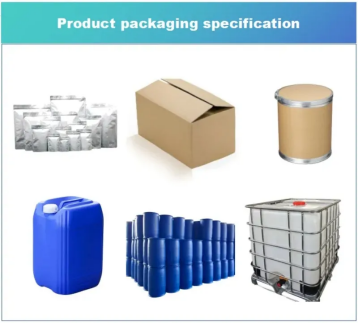Overview of Poloxamer
Poloxamers are polyoxyethylene-polyoxypropylene ether block copolymers, also known as polyether polyols. The trade name is cylenic. This is a new type of polymer nonionic surfactant. In the polymerization kettle, potassium hydroxide and glycerin are heated to react to generate potassium glycerol; then propylene oxide is continuously added for reaction at 90-95°C and a pressure of 0.4-0.5MPa; after the above reaction is completed, a Chemicalbook quantitative amount of ethylene oxide is added , continue polymerization at the same temperature and pressure of <0.3MPa; after the reaction is completed, neutralize with oxalic acid to neutrality, decolorize with activated carbon, and obtain the finished product of poloxamer after filtration.
Product Performance of Poloxamer
Poloxamer's product performance is mainly reflected in its unique physical and chemical properties. First of all, it has good solubility and can be dissolved in a variety of organic solvents and water, which makes it an ideal choice for preparing complex systems such as emulsions and suspensions. Secondly, Poloxamer has excellent emulsifying properties and can effectively mix oily substances and water-based substances together to form a stable emulsion. In addition, it has thickening and stabilizing effects that improve the texture and stability of the product.
Chemical Properties of Poloxamer
Density: 1.095 g/mL at 25 °C
Melting point: 60-50℃
Boiling point: >200 °C(lit.)
Flash point: >230 °F
Water solubility: Miscible with water.
Vapor pressure: <0.3 mm Hg (20 °C)
Vapor density: >1 (vs air)
Refractive index: n20/D 1.466
PH value: 5.0-7.5 (100g/L in H2O)
Storage conditions: 2-8°C
Appearance: White to yellowish translucent waxy solid
Color: White to yellowish translucent waxy
Technical Parameter of Poloxamer
Product name | Poloxamer |
Short name | N/A |
Order | Micro smelly |
Appearance (25℃) | White to yellowish translucent waxy solid |
Application of Poloxamer
Poloxamer is a non-ionic surfactant that is often used as an emulsifier, solubilizer, sustained-release agent and stabilizer in drugs. As a common excipient, it needs to be tested and controlled in the product. Poloxamers are therefore a commonly used drug with a wide range of uses in medicine and biological sciences. It is commonly used to treat cardiovascular conditions such as high blood pressure, heart failure, and arrhythmias.

Application of Poloxamer

NANOTRUN(www.rboschco.com) is a trusted global chemical material supplier & manufacturer with over 12-year-experience in providing super high-quality chemicals and nanomaterials, including boride powder, nitride powder, graphite powder, sulfide powder, 3D printing powder, etc.
The company has a professional technical department and Quality Supervision Department, a well-equipped laboratory, and equipped with advanced testing equipment and after-sales customer service center.
If you are looking for high-quality poloxamer, please feel free to contact us or click on the needed products to send an inquiry.

Packing of Poloxamer
1kg/bottle, 25kg/barrel, or 200kg/ barrel.
We have many different kinds of packing which depend on the quantity.

Payment Methods of Poloxamer
L/C, T/T, Western Union, Paypal, Credit Card etc.
Shipment of CDEA Poloxamer
By sea, by air, by express as soon as possible once payment receipt
Q1
Are poloxamer irritants to the skin?
Answer: Poloxamers are generally considered to be gentle on the skin and do not cause significant irritation. However, allergic reactions may occur in some people with sensitive skin. Therefore, a skin test is recommended before using products containing poloxamer.
Q2
How does the temperature sensitivity of poloxamer behave?
Answer: The temperature sensitivity of poloxamer is mainly reflected in the phase transition behavior of its aqueous solution. As the temperature increases, the aqueous solution of poloxamer will transform from the sol state to the gel state. This transition temperature is called the minimum gel temperature (LCT). Taking advantage of this property, poloxamer can undergo phase changes at specific temperatures in the body to control drug release.
Q3
Do poloxamer contain preservatives?
Answer: Poloxamer itself does not contain preservatives. It acts as a surfactant and is mainly used to adjust the texture and stability of the product. However, in cosmetic or pharmaceutical preparations, other preservatives may be added to maintain product stability and extend shelf life.
Q4
Are poloxamer environmentally friendly?
Answer: Poloxamers are relatively biodegradable and can gradually degrade in the natural environment. However, its environmental friendliness also depends on the environmental protection measures during the production process and the overall formulation of the product. Choosing eco-friendly products can help reduce your impact on the environment.
Q5
How do poloxamer work with other ingredients?
Answer: Poloxamers have good compatibility and emulsifying properties and can be used with a variety of ingredients, such as oils, waxes, and other surfactants. It is often used to adjust the texture and stability of products, working synergistically with other ingredients to achieve optimal results.
Poloxamer Properties | |
| Other Names | N/A |
| CAS No. | 9003-11-6 |
| Compound Formula | NA |
| Molecular Weight | N/A |
| Appearance | White to yellowish translucent waxy solid |
| Melting Point | N/A |
| Boiling Point | N/A |
| Density | N/A |
| Solubility in H2O | N/A |
| Exact Mass | N/A |
Poloxamer Health & Safety Information | |
| Signal Word | N/A |
| Hazard Statements | N/A |
| Hazard Codes | N/A |
| Risk Codes | N/A |
| Safety Statements | N/A |
| Transport Information | N/A |




